#Olonets
Text

Marppa Martiskainen embroidering a ritual towel, "käspaikka", in Ilomantsi, Karelia
Posting this to honor the ones who came before after spending hours yesterday graphing a Karelian piece.
Karelia spans both Finland and Russia and many historical textile pieces are automatically identified as Russian when they are in fact Finnish. Mary B. Kelly’s Goddesses of the Northlands first brought this to my attention.
While the folk artist pictured above is Finnish, the piece I was working on yesterday was found in Olonets in the Russian portion of Karelia.



#Russia#Finland#Karelia#Olonets#folk embroidery#devotional embroidery#goddess embroidery#traditional motifs#slavic#finnish#textile#fiber#art#embroidery
34 notes
·
View notes
Text
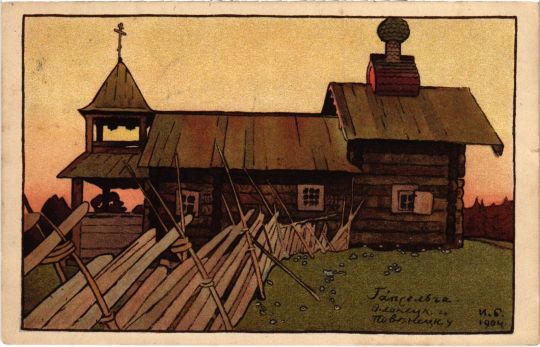
Wooden church in Olonets, Karelia, Russia
Russian vintage postcard, illustrated by Ivan Bilibin, mailed in 1915
#old#postcard#illustrated#postkaart#russian#wooden#ivan#karelia#olonets#ivan bilibin#vintage#briefkaart#postal#ansichtskarte#bilibin#church#ephemera#photography#photo#postkarte#tarjeta#russia#mailed#historic#sepia#1915#carte postale
45 notes
·
View notes
Text

Cooking patties (kalitki),Luvozero village.Povenetskiy uyezd of Olonets province (1894)
Photography by Konrad Inha (1865-1930)
#Россия#Russia#vintage#photography#Олонецкая губерния#Olonets province#карелы#karjalaiset#karjala#karelians#people#Europe#Konrad Inha#finnish photographer#photographer#karjalan#karelian#russian#european#black and white#vintage photography#1890s#1894#19th century
137 notes
·
View notes
Text
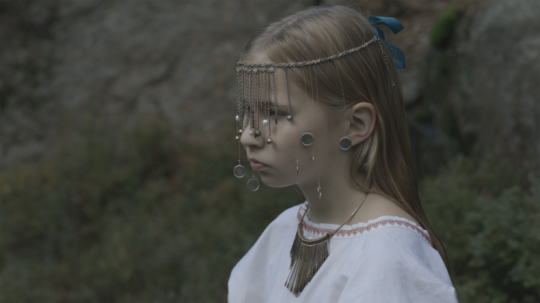
Lindu. Karjalaine fil'mu kudamas paistah karjalakse livvin murdehel.
Bird. A Karelian film in Liygi (Olonets dialect of Karelian).
22 notes
·
View notes
Text
Muarjat karjalakse
Berries in Olonets Karelian
mandžoi strawberry
must'oi bilberry
muur'oi hard cloudberry
hilloi, l'uboi ripe cloudberry
vagoi, vavarju raspberry
buolu lingonberry
garbalo cranberry
tartukki buckthorn
karvasmuarju gooseberry
čiekku, počinmust́oi crowberry
ruskeičihoi red currant
mustučihoi black currant
valgeičihoi, keldučihoi white currant
or'hoi, mezimuarju arctic raspberry
meččymandžoi wild strawberry
Murrehvariatsii alovehittain
Dialectal variation by regions
Salmi
mańdžoi, must́oi, muuroi, ĺuboi, vavoi, garbalo, čiekku, oŕhoi
Munjärvi
mańdžoi, mušt́oi, muuroi, vagoi
Säämäjärvi
mańdžoi, mušt́oi, muuroi, hilloi~šĺuboi, vagoi, garbalo, koirammaŕju~čigloimuaŕju~počimmušt́oi, oŕhoi
Vieljärvi
mandžoi~mańdžoi, must́oi~mušt́oi, muuŕoi, šĺuboi, vagoi, počimmust́oi~mušt́oi, oŕhoi
Tulemajärvi
mandžoi, must́oi~mušt́oi, muuroi, ĺuboi, vavoi, garbalo, oŕhoi
Vitele
mandžoi~mańdžoi, must́oi, muuŕoi, ĺuboi, vavoi, garbalo, čiakoi~čiakkoi
Nekkula-Riipuškala
mandžoi~mańdžoi, must́oi, muuŕoi, vavaŕjo~vavarju~vagoi~vavoi, guarbalo, čiekku, oŕhoi~oĺhoi~lindoi
#karelian#olonets karelian#language blog#karjalan kieli#karjala#language posting#livvinkarjala#berries#vocabulary
9 notes
·
View notes
Text
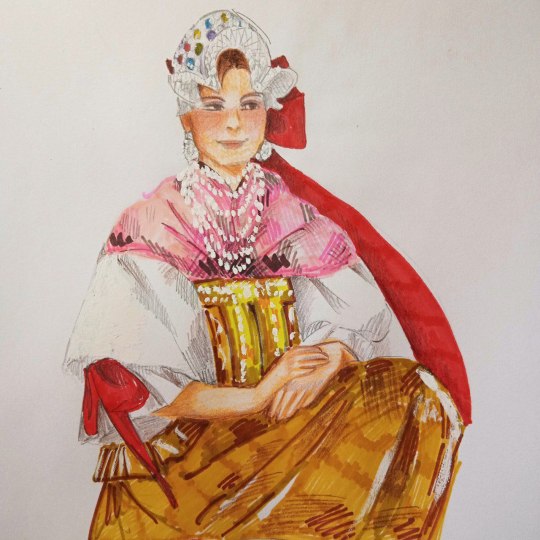
Олонецкая губерния, Республика Карелия\Olonets Province, Republic of Karelia
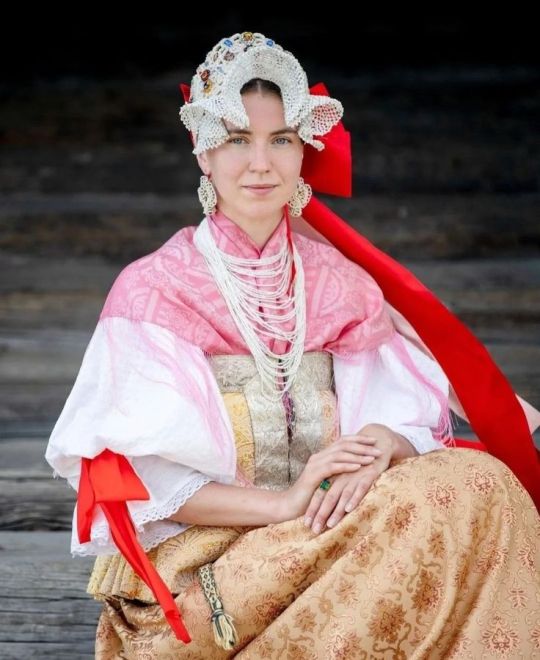
Референс\Reference

Севернее даже Спб\North of even St. Petersburg
Pinterest https://pin.it/37LrD2Cwu
Telegram https://t.me/moyaaaaan
7 notes
·
View notes
Text

Young woman in festive costume Kargopol district, Olonets province, late 19th century, Russia
17 notes
·
View notes
Text
Finnic Swan Folkstories for Grömky.
Underneath the cut since this is really fucking long. Please no reblogs, this is a messy compilation lol.
Finnic peoples have always considered birds to be sacred. According to folklore, the entire universe was born from bluebill eggs. (The bluebill lays six golden eggs and one iron egg on the knee of Ilmatar. When Ilmatar shifts her knee, the eggs drop in the sea and become the earth, the sky, the stars, and the sun.) The most noble of birds were consecrated as messengers between different worlds. Birds were fortune tellers and "soul birds."

Map of Finnic peoples (Sometimes referred to as Baltic-Finnic peoples)
The Petroglyphs
The Finnic peoples who made the petroglyphs in Karelia's Äänisjärvi (Onega) have sometimes been called "the waterfowl people."


The first petroglyph is called "the swan and the egg." 44% of the petroglyphs in Äänisjärvi (Onega) are of waterfowl and most of them are of swans.
The Swan
The swan was the most sacred of all birds, especially the whooper swan, "laulujoutsen." In Finnish it translates to "song swan." Whooper swan is also Finland's national bird.

According to Karelian beliefs you shouldn't hurt a swan, and someone who hurt a swan would die soon.
The swan was the bringer of the spring, and as such it was of Godly origins, and so killing a swan was a crime that would lead to death. According to Sortavala folklore the swan was related to humans, and as such couldn't be eaten.
Because the swan has a long neck, it's possible that people thought it could see places where others couldn't. Because it is half submerged and half on the surface, it could look into the land of the dead, which was on the other side of the bottom of the lake according to some beliefs.
In Kalevala
Swans were one connection between Tuonela (the underworld) and this world. The Swan of Tuoni swam in the black river Tuoni in Tuonela. The dead crossing over to Tuonela through the river Tuoni would see this swan watching them from a distance.

Tuonelan Joutsen (The swan of Tuonela), Akseli Gallen-Kallela 1904-1905
The Story of the Tuoni Swan in Kalevala
The swan is swimming in the dark river of Tuoni. Anyone who tries to shoot the swan will be faced with death.
Lemminkäinen is tasked with shooting the swan of Tuoni. He leaves to shoot the swan, taking his bow and arrows with him. But then, the blind man preys upon him and throws a water snake through him and Lemminkäinen is thrown into the stream. The bloody boy of Tuoni slashes Lemminkäinen to pieces and tells him then to try and shoot the swan in the river.
Later, the mother of Lemminkäinen drags the pieces of his son from the river and brings him to life, though Lemminkäinen does not survive in all the folk stories.

Lemminkäisen äiti (The mother of Lemminkäinen), Akseli Gallen-Kallela 1897
This well known Finnish painting depicts the scene after the mother of Lemminkäinen has dragged the pieces of her son to the shore. You can see the river Tuoni with the swan of Tuoni in the background.
Notes
Kalevala itself is composed of Finnic folk stories.
It's a mixture of Karelian and Finnish folk stories, along with Ingrian and other Finno-Ugric folk stories, so it's not actually just Finnish folklore like people tend to assume.
Elias Lönnrot compiled the Kalevala in 1828–1835 of folk stories around Finland (Ostrobothnia, Finnish-Karelia [pre-war: North Karelia, South Karelia, Ladoga Karelia, Karelian Isthmus], Savonia, Kainuu), White Karelia, Olonet's Karelia, Ingria, and other areas.
Today, there is a prevailing perception that the Kalevala is a mixture of both Western and Eastern poetic traditions.

Post-war (1944) map of Eastern Finland, the Karelias and Ingria. Pre-war (1917-1944) Ladoga Karelia and the Karelian Isthmus were a part of Finland. Before 1917 Finland was a part of Russia as the autonomous Grand Duchy of Finland.
Lönnrot translated many Karelian poems into Finnish already in the recording situation and edited them into his own work. In that sense, it can be said that there has been cultural appropriation of Karelian poems.
During Lönnrot's time, the concept of "Finnish people" was broader than it is today. It also included Karelian, Ingrian and other Finnic peoples. When Lönnrot was compiling the Kalevala, Finland and the other Finnic areas were under Imperial Russian rule. The Kalevala played an important role in the forming of the written Finnish language and started a phenomenon in Finland called Karelianism that mirrored the national romanticism in Europe, culminating in Finland gaining independence in 1917 after the Russian Revolution.
The Kalevalamitta (the Kalevala meter, folk poetry that uses a form of trochaic tetrameter that leans heavily on alliteration) that the Kalevala is written in is thousands of years old, though on the basis of linguistic and historical grounds, it can only be said that it was born some time b.c.e. as it cannot be dated accurately. Great poetry singers like the White Karelian Arhippa Perttunen (1769-1841) could remember up to 6-10k verses of poems and spells, and the tradition was passed down through these great poetry singers in the communities for thousands of years. It's estimated that about 1/4 of Kalevala's poems come from Arhippa Perttunen. The tradition was already largely dying out when the recording efforts started around 1830 and continued to the 20th century. Around 80 000 verses were recorded, and they are all digitized into a database here.
The use of the Kalevalamitta slowly began to disappear from the area of Finland after the 16th-century reformation, when the Lutheran church banned the song tradition as pagan. Instead, the European style of poetry based on weights and rhymes spread to the area. The Kalevalamitta song tradition first disappeared from Western Finland and later from the rest of the area of Finland. In White Karelia, the Kalevalamitta song tradition was preserved the longest, but it has died out as well around 2017.
Nevertheless, Kalevalamitta poetry is still very present in culture, since common (and ancient) Finnish lullabies "Nuku nuku nurmilintu," and "Tuu tuu tupakkarulla," and children's songs like "Lennä lennä leppäkerttu" all use the Kalevalamitta and are in constant use in Finland.
Wow did u actually read this. Impressive!
So there! This thing is compiled of many (possibly unreliable lmao) sources on Karelian/Finnish/Kalevala folklore regarding swans and it's been hastily put together and translated so <3 and this might be really bad or whatever, I'm no academic.
2/5 of Finnish people have Finnish-Karelian roots due to the war, so a lot of Finnish-Karelian traditions like the Karelian pies are very common throughout Finland, and Kalevala is a big part of Finnish national identity due to a lot of complicated matters. But that's an entire essay of its own. Okay, bye!
3 notes
·
View notes
Photo
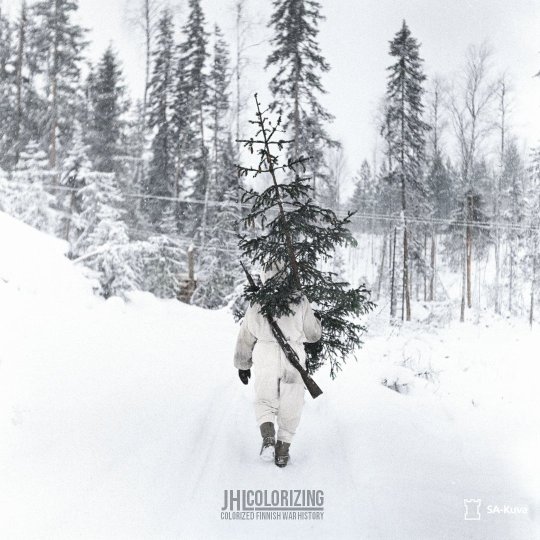
A Christmas Tree is carried into dugout, Olonets Isthmus, December 24, 1942.
••••••••
Kuusi kannetaan korsuun jouluaattona, Aunuksen kannas, 24.12.1942.
••••••••
[ sa-kuva | 116393 | Borg ]
#ww2#wwII#WWII History#ww2 worldwar2 wwii#wwiihistory#worldwar2#worldwarii#worldwartwo#worldwar#finland#ww2finland#Suomi#suomisodassa#history#war history#ww2history#colorized#colorizing#jhlcolorizing#colourised#colourized#jatkosota#sotahistoria#continuation war#continuationwar#ww2 continuationwar
41 notes
·
View notes
Video
youtube
“Kerenski” is a Finnish song mocking Alexander Kerensky, a Russian revolutionary who led the Russian Provisional Government and the short-lived Russian Republic for three months from late July to early November 1917.
The tune is based on a Russian song Kak tsvetok dushistyy.
The lyrics on the video have some errors and take some liberties, so I have added and translated the lyrics here. I decided to translate “ai, ai” as “oh, no” to express the mocking tone instead of “oh, oh”. “Ai, ai” can also be something you say to chide a child or a pet whilst holding your index finger at them.
Kerenski se leipoi tuiman taikinan,
suolaksi hän aikoi pienen Suomenmaan.
Ai, ai, Kerenski, turha on sun toiveesi,
Suomi on jo vapaa maa ryssän vallasta.
Kerensky he baked a saltless bread,
he intended the little land of Finland to be the salt.
Oh, no, Kerensky, your wish is futile,
Finland is already a free land from the Ruskie’s rule.
Puolanmaa on jauhot, Viro hiivana,
Ukraina on sokeri, Liivi liemenä.
Aunus, Vepsä, Inkeri, Doni, Krimi, Kaukaasi,
kaardemummit, sahraimet, voit ja maustineet.
The land of Poland is flour, Estonia as yeast
Ukraine is sugar, Latvia as broth.
Olonets, Veps, Ingria, Don, Crimea, Caucasus,
cardamoms, saffrons, butters, and spices.
Taikina se paisui, kiehui, kohosi.
Kerenski se riehui, sotki, hämmensi.
Vatkaat hyvää taikinaa, harvoin sitä nähdä saa,
suloista ja makeaa, niin kuin hunajaa.
The dough expanded, boiled, rose.
Kerensky he rampaged, messed, stirred.
You are whisking a good dough, one that is rarely seen,
lovely and sweet, like honey.
Helsingissä kerran kävi Kerenski,
Tokoille* hän siellä suuta suikkasi.
Suomen herrat lumosi, taikinahan survosi.
Ai, ai, Kerenski, turha toiveesi!
Kerensky once visited Helsinki,
There he kissed Tokoi. *
He enchanted the lords of Finland, squashed them into the dough.
Oh, no, Kerensky, your futile wish!
Saksan koira jalo kaatoi taikinan,
hiivat, suolat ahmi kitaansa mahtavaan.
Kokki itse karkasi, ulkomaille laukkasi.
Ai, ai, Kerenski, turhat toiveesi!
The noble hound of Germany knocked over the dough,
yeasts, salts he devoured into his great maw.
The chef himself escaped, galloped abroad.
Oh, no, Kerensky, your futile wishes!
* Oskari Tokoi was the Chairman of the Senate of Finland (world’s first social democratic leader of government). Kerensky kissed him as a sign of “eternal union between Russia and the peoples of Finland”. Tokoi later immigrated to Massachusetts, USA. Tokoinranta quay in Helsinki is named after him.
11 notes
·
View notes
Text









Photos 1 & 2:

Photo 3:
My replication of the original piece
Photos (with text) 4-7:
Goddess embroideries of Eastern Europe by Mary B. Kelly 1996 (personal library)
Photos 8 & 9:
My replication used in my practice
#folk embroidery#traditional motifs#goddess embroidery#devotional embroidery#embroidery#Russia#Olonets#Karelia#red work#folk costume#slavic#mother goddess#goddess#personal library
10 notes
·
View notes
Text

Towel edge. Olonets province, northern Russia. 19th century. Counted thread work with red linen thread on a linen ground; edging of bobbin lace.
3 notes
·
View notes
Text
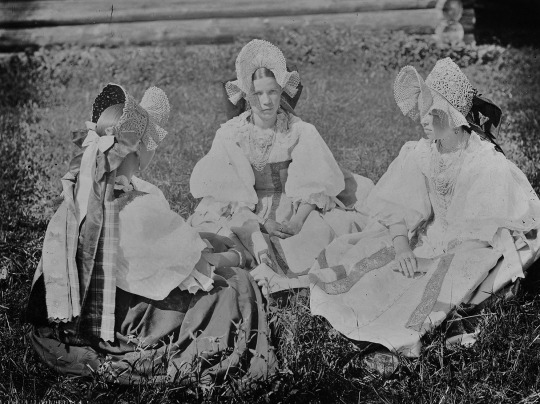
Karelian women,Olonetskiy uyezd of Olonets province (1899)
Photography by Mikhail Krukovskiy (1856-1936)
#Россия#Russia#vintage#photography#Олонецкая губерния#Olonets province#карелы#karjalaiset#karjala#karelians#Europe#history#карельский народный костюм#karelian costume#costume#russian#women#karjalan#karelian#european#vintage photography#1890s#1899#19th century
86 notes
·
View notes
Text

Karelian man from Olonets Governorate and (Komi-)Zyryan woman from Vologda Governorate, 1830s.
From ГИМ Archive.
0 notes
Text
Tytöt mennäh ńäppizil, brihat kobračal.
ńäpit fingers
kobru palm (hand)
Masturbation words in Olonets Karelian.
2 notes
·
View notes
